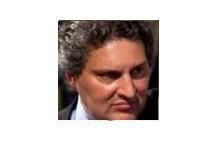
IFR Editor-at-large Keith Mullin
The CFTC, SEC and FBI are now all investigating the losses; investors have lodged lawsuits claiming Dimon misled them over his “tempest in a teapot” comment; while the saga is on the radar screen of Barack Obama, Dimon’s erstwhile ally; and the episode has unleashed a regulatory backlash.
I’d said in a blog last week (Changes near the top of JP Morgan but what about Dimon?) that all clues regarding the CIO’s losses led directly back to Dimon. Nothing he’s said or done since suggests anything else.
He has to go.
I find it very hard to believe that Dimon didn’t know what was going on within the CIO. He may not necessarily have been aware of the specific positions being put on, but he either ordered the massive build-out of the CIO trading portfolio or, even worse, knew what the group was up to. Anything else is tantamount to being asleep at the wheel, given the sheer size of the CIO’s positions and that Ina Drew reported directly to him.
The problem is: if he goes, who will replace him?
Dimon has gone to great lengths to wage an anti-succession campaign to the point where there is no obvious successor to run the sprawling group. He’s made sure of that. He’s also steadfastly declined to split the chairman and CEO roles – a move backed by investors at the recent shareholders’ meeting. If the roles had been split, you could imagine Dimon relinquishing (however reluctantly) the CEO slot, and acting as chairman with responsibility, among other things, for hand-holding an internal CEO in need of seasoning.
Staley’s moment?
That said, there are plenty of big hitters at the bank. Industry watchers have been saying all along that Jes Staley, investment bank CEO since 2009, is unlikely to succeed Dimon, partly because he is only a year younger. But that was on the basis that Dimon would be around for another five years or so. Assuming that’s not the case, Staley could be the man, especially since Todd Maclin, the veteran CEO of consumer and business banking, had made it clear as long ago as the middle of last year that he was looking to stand down.
Michael Cavanagh, CEO of the Treasury and Securities Services division who took a step centre-stage with his move to oversee and co-ordinate the group’s response to the recent losses; and Mary Callahan Erdoes, CEO of Asset Management are also possibilities. Both are highly regarded; but I reckon CFO Doug Braunstein’s comments that the bank was “very comfortable with the positions we have” at the same time of the Dimon tempest-in-a-teapot gaffe, have pushed him out of the race.
Who knows what conversations are taking place around the situation at JP Morgan, but one thing’s for sure, the bank’s share price isn’t going anywhere fast while the mess festers and deepens.
If Staley gets the nod, it would give an opportunity for Matt Zames or Daniel Pinto – global co-heads of fixed income until the trading losses were made public – to run the investment bank. Zames’s move into the CIO to take over from Ina Drew was seen as a significant move. Some reports have suggested Zames could even get the top job at group, but I must admit I don’t see it at this point. Even at the level of the investment bank, I still think that because Pinto is a few years older than Zames and in addition is group CEO for the EMEA region, Pinto has the edge.
Pinto and Zames were given their most recent positions after Staley had taken over the investment bank from Steve Black and Bill Winters (who of course was unceremoniously dispatched) and Tony Best, a close friend of Winters and then global head of fixed-income sales, was sidelined and eventually left the bank.
Oddly enough, Tony Best has been mentioned in connection with any senior management reshuffling at JP Morgan. At the time of his departure from the firm in 2010, he had built a 28-year career at the bank and was very well regarded. To-date, he has remained out of the business.
And as you can imagine, Winters’ name has been thrown into the frame for Dimon’s job. He’s still one of the most highly regarded individuals in the business but then again his name always gets aired around any industry-leading position. Even so, I imagine his phone’s been ringing off the hook over at Renshaw Bay.
But the timing doesn’t look right for Winters to consider a move back into the business. Renshaw Bay looks to be ramping up activities as it puts together its real-estate team. Earlier this year, Winters hired Jon Rickert from JP Morgan, where he had been head of European real estate structured finance, to manage its real-estate debt business.
More recently, Lynn Gilbert, former head of EMEA real estate at Barclays Capital and before that head of European CMBS origination at Morgan Stanley, joined to run the firm’s senior debt fund. (Also on the team is Andrew Gordon, ex-Lloyds whom Rickert got to know at the time of the sale of Lloyds’ £900m portfolio of non-performing commercial real-estate loans – aka Project Royal – that eventually went to Lone Star.)
Who knows what conversations are taking place around the situation at JP Morgan, but one thing’s for sure, the bank’s share price isn’t going anywhere fast while the mess festers and deepens. Jamie’s departure could be just the pop they need.

